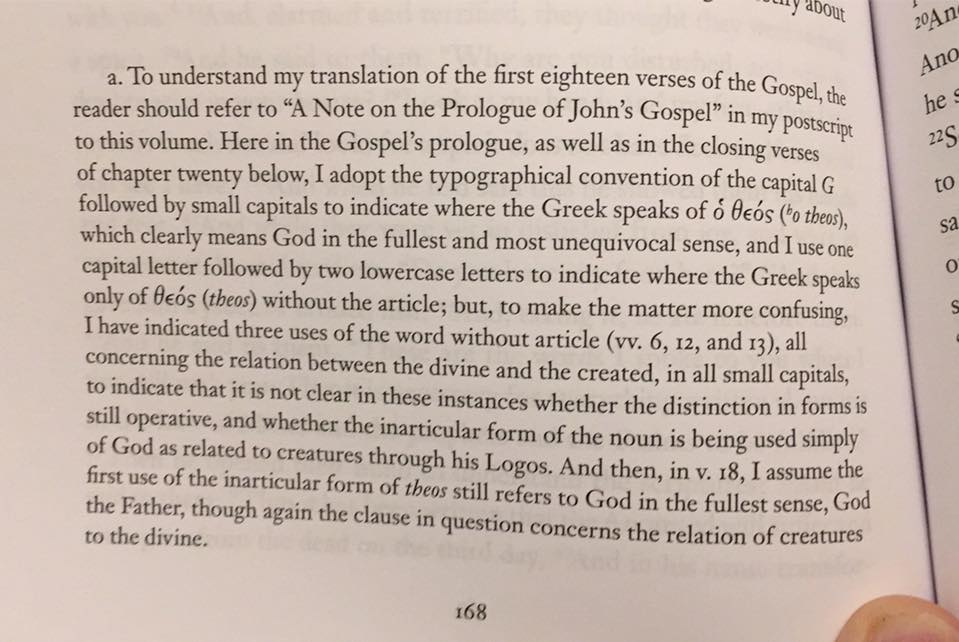The online version of the NET Bible contains pretty extensive translator’s notes. I linked to John 1 if you want to check it out. It’s not as comprehensive as a good commentary, but it does give a little bit of a “peek behind the scenes” of their translation decisions.
By the way, I’m with Wright when it comes to translation theory. Make it understandable first and foremost.
EDIT: Sorry, I should make this easier for everyone. Here are the NET Bible’s footnotes on John 1:1, which they translate opposite of Hart, “and the Word was fully God.” tn is a translation note, and sn is a study note:
tn Or “and what God was the Word was.” Colwell’s Rule is often invoked to support the translation of θεός (qeos) as definite (“God”) rather than indefinite (“a god”) here. However, Colwell’s Rule merely permits, but does not demand, that a predicate nominative ahead of an equative verb be translated as definite rather than indefinite. Furthermore, Colwell’s Rule did not deal with a third possibility, that the anarthrous predicate noun may have more of a qualitative nuance when placed ahead of the verb. A definite meaning for the term is reflected in the traditional rendering “the word was God.” From a technical standpoint, though, it is preferable to see a qualitative aspect to anarthrous θεός in John 1:1c (ExSyn 266-69). Translations like the NEB, REB, and Moffatt are helpful in capturing the sense in John 1:1c, that the Word was fully deity in essence (just as much God as God the Father). However, in contemporary English “the Word was divine” (Moffatt) does not quite catch the meaning since “divine” as a descriptive term is not used in contemporary English exclusively of God. The translation “what God was the Word was” is perhaps the most nuanced rendering, conveying that everything God was in essence, the Word was too. This points to unity of essence between the Father and the Son without equating the persons. However, in surveying a number of native speakers of English, some of whom had formal theological training and some of whom did not, the editors concluded that the fine distinctions indicated by “what God was the Word was” would not be understood by many contemporary readers. Thus the translation “the Word was fully God” was chosen because it is more likely to convey the meaning to the average English reader that the Logos (which “became flesh and took up residence among us” in John 1:14 and is thereafter identified in the Fourth Gospel as Jesus) is one in essence with God the Father. The previous phrase, “the Word was with God,” shows that the Logos is distinct in person from God the Father.
sn And the Word was fully God. John’s theology consistently drives toward the conclusion that Jesus, the incarnate Word, is just as much God as God the Father. This can be seen, for example, in texts like John 10:30 (“The Father and I are one”), 17:11 (“so that they may be one just as we are one”), and 8:58 (“before Abraham came into existence, I am”). The construction in John 1:1c does not equate the Word with the person of God (this is ruled out by 1:1b, “the Word was with God”); rather it affirms that the Word and God are one in essence.

